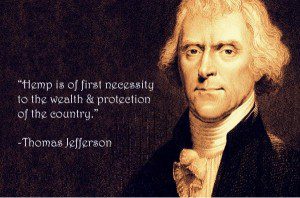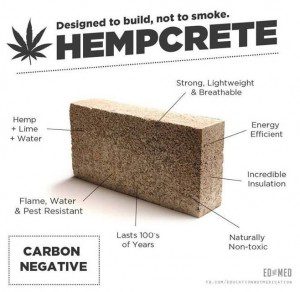| Online: | |
| Visits: | |
| Stories: |

| Story Views | |
| Now: | |
| Last Hour: | |
| Last 24 Hours: | |
| Total: | |
Move Over Cotton, Say Hello to Hemp – The ‘Forbidden’ Crop That’s Taking the World by Storm
Follow TIS on Twitter: @Truth_is_Scary & Like TIS of Facebook- facebook.com/TruthisScary
Carolanne Wright/Wake Up World
The Declaration of Independence was drafted on it. The American Founding Fathers urged the fledgling country to grow it. And the first paper was made from it 1,900 years ago. Hemp. It’s one of the most versatile and sustainable cash crops on the planet. For all it’s merits, however, the plant has also been on a “no-grow” list for over seventy years in the United States, due to draconian lawsestablished by the Drug Enforcement Administration (DEA). Thankfully, that’s all about to change.
A Modern-Day Gold Rush
As one of the oldest cultivated crops, hemp has a rich and colorful history. Cloth, paper, food, building materials, fuel, plastic — you name it, and there’s a good chance it can be made from the plant.
Canada has fully embraced the recent demand for hemp and subsequently grows it to the tune of almost $1 billion a year, which equates to $250 net profit for each acre. Compare this with soy, the United States version of a major crop, which averaged around $71 per acre in 2014.
The Los Angeles Times reports:
“Canada’s windfall has been largely due to the American demand for omega-balanced hempseed oil. But hemp is also a go-to material for dozens of applications all over the world. In a Dutch factory recently, I held the stronger-than-steel hemp fiber that’s used in Mercedes door panels, and Britain’s Marks and Spencer department store chain used hemp fiber insulation in a new flagship outlet. “Hempcrete” outperforms fiberglass insulation.”
While Canada reaps the financial benefits of the plant, the U.S. still lags behind. In a step towards legalizing hemp for industrial uses, President Obama removed it from the Controlled Substances Act in 2014 — as long as it was used for agricultural research. All the same, a number of states are weary of the snail-like pace of the Feds and are taking matters into their own hands — by passing legislation to import hemp seed for pilot programs. But the DEA has been slow in reading the memo.
In May 2014, the agency seized a 286-pound shipment of Italian hemp seed bound for Kentucky’s state agriculture department. “After a weeklong standoff, a federal agency had to be reminded by the federal courts that the law had changed and Kentucky’s seed imports were legal,” writes the Times.
Cotton vs. Hemp
Political shenanigans aside, one of the most desperately needed uses for the plant involves the creation of durable and eco-friendly fabric — especially considering the damaging effects of conventional cotton production. Plainly put: pesticide-riddled cotton is an ecological and health nightmare. The crop requires massive amounts of irrigation, and is largely grown in dry regions of the world where water is scarce, like Egypt, China’s Xinjiang province, California and Texas.
Source: http://truthisscary.com/2015/09/move-over-cotton-say-hello-to-hemp-the-forbidden-crop-thats-taking-the-world-by-storm/





